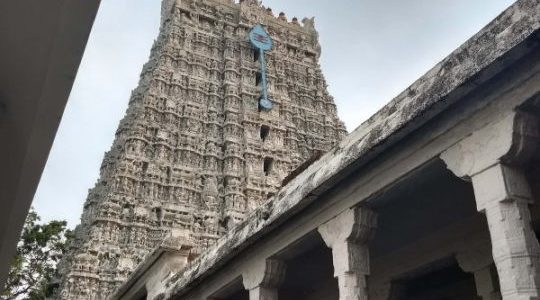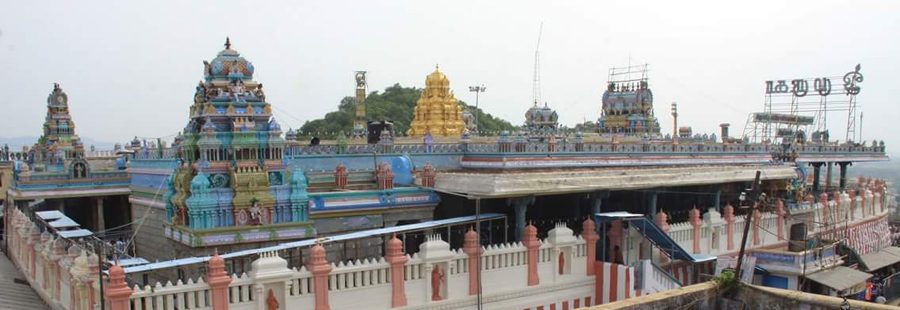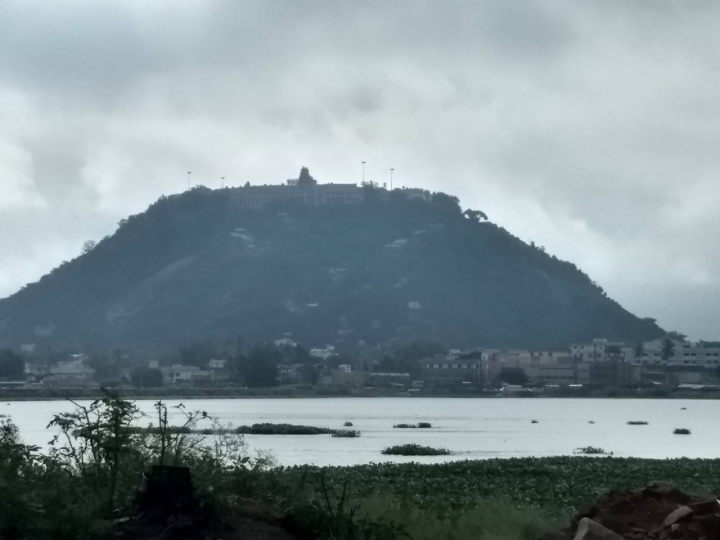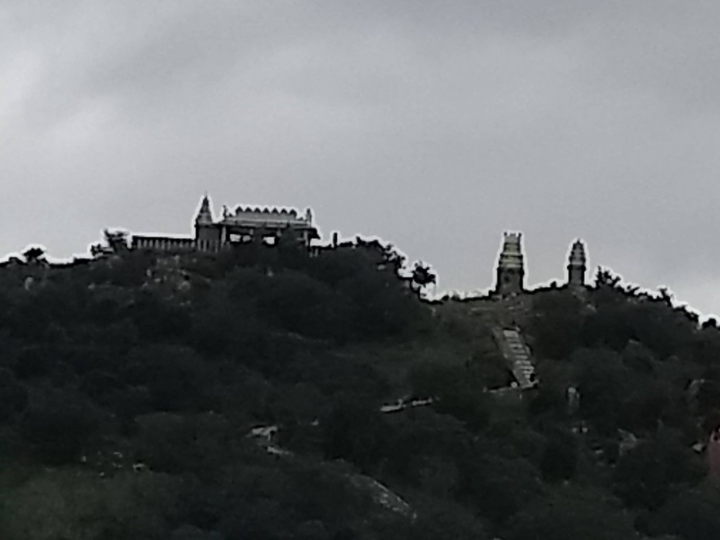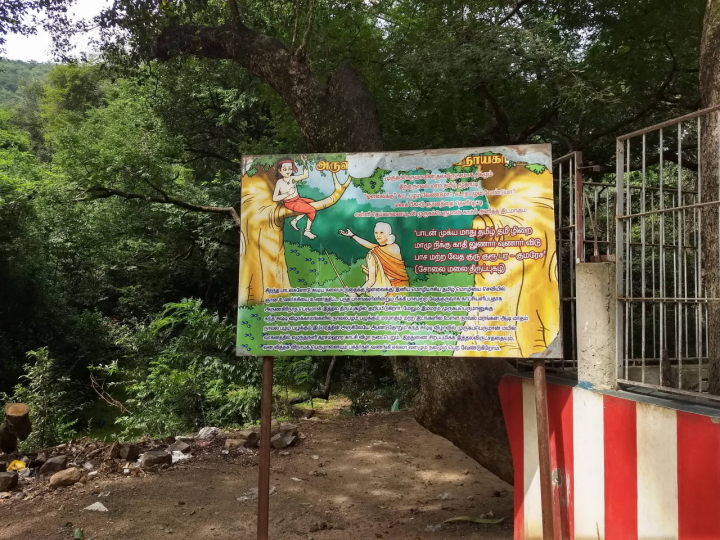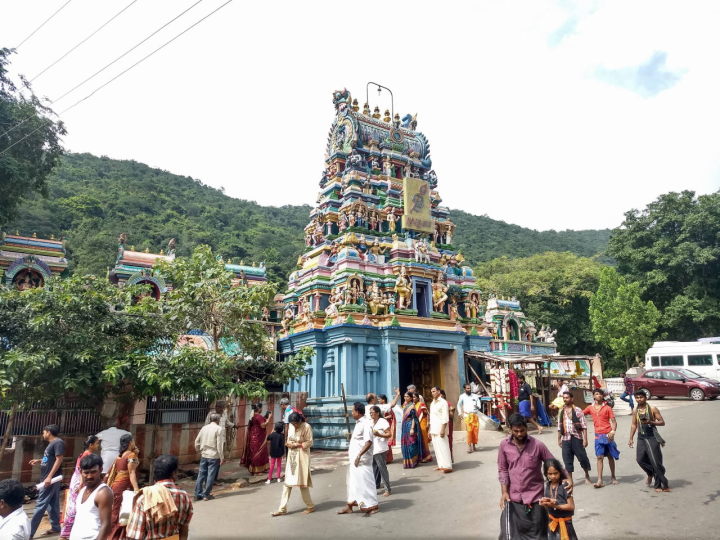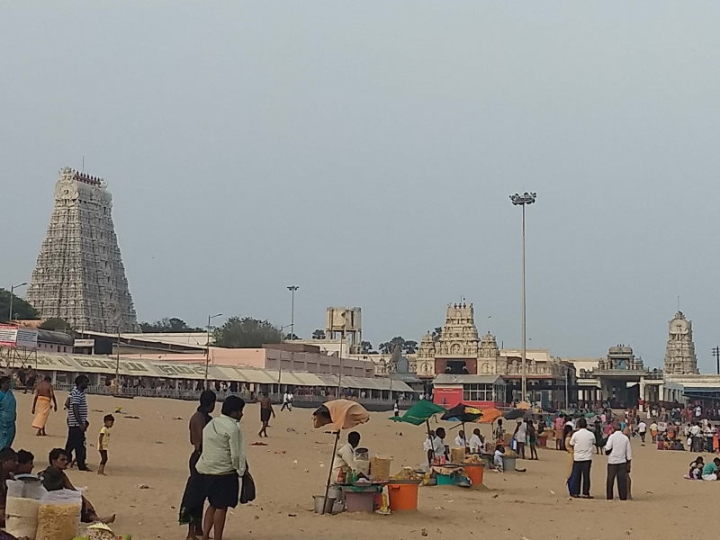Lord Karthikeya, known in Tamil language as Murugan, holds a special place in the heart of the Hindu natives of Tamil Nadu. In fact, it is the only state where we have observed really high importance given to the second child of Lord Shiva. In most other states, Lord Ganesha is held in high regard while Karthikeya gets a small sanctum somewhere in a corner shrine in major temples. In fact, so important is Lord Murugan to Tamil Nadu that they have the concept of Arupadai Veedu, or the six abodes of the Lord. This is comparable to Maharashtra’s Ashtavinayak, the Char Dham of Uttarakhand and the Shaktipeeths across India.
The Arupadai Veedu concept appears in literary works of Tamil poets and story writers who were staunch devotees of Lord Murugan. A good example is Arunagirinaathar’s work Thiruppugazh and Nakkeerar’s work Thirumurugaatrupadai. Both names are quite a mouthful for our non-Tamil readers. So let’s make this post easier and go on a tour of the six major Murugan temples around Tamil Nadu.
Temples constituting Arupadai Veedu
According to Tamil literature, 5 different deities rule over 5 different land forms, i.e. coast, mountain, fertile plain (usually a river bank or valley), desert (arid area) and forest. Lord Murugan is supposedly the Lord of mountains. There are several names for the deity, such as Murugan, Karthikeya, Kandha Swamy, Saravana, Subramanya, etc. These names are also quite commonly used as Tamil male names around the state.

Tear-out calendars with an image of Lord Murugan in front of a temple (Thiruchendhur in this case) are made by a company named Rani Muthu. These calendars are not only famous in Tamil Nadu, but also popular among Tamils in other states and around the world. If you see this calendar in a house, the residents are Tamil with 99% probability.
Despite being dedicated to the Lord of mountains, the temples are actually geographically diverse. We’ll tell you the reason for that as well.
Here are the six temples that make up Arupadai Veedu. The order is from north of the state to the south.
1 Thirutthani (Thiruvallur district, nearest cities: Chennai, Arakkonam)
2 Swamimalai (Thanjavur or Tanjore district, nearest cities: Thanjavur, Kumbakkonam)
3 Pazhani (Dindigul district, nearest cities: Dindigul, Pollachi, Kodaikkanal)
4 Thirupparankundram (Madurai district, nearest city: Madurai)
5 Pazhamudhir Cholai (Madurai district, nearest city: Madurai)
6 Thiruchendhur (Thoothukkudi or Tuticorin district, nearest cities: Kanyakumari, Nagercoil, Thoothukkudi)
4 of the 6 are hill top temples, confirming Lord Murugan’s status as the Lord of hills. But Swamimalai is on an artificial hill by the bank of a famous river and Thiruchendhur is on a beach. Thirutthani, Pazhani and Thirupparankundram are on arid hills with tortuous weather, whereas Pazhamudhir Cholai is on a hill with thick forests and pleasant weather.
Here’s looking at the six temples one by one.
1 Thirutthani
Thirutthani is the north-most Arupadai Veedu. It is in Thiruvallur district and is very close to Tamil Nadu’s border with Andhra Pradesh’s Chittoor district. Thirutthani was actually part of Andhra Pradesh until 1960, when the state border reform act transferred Thirutthani to Tamil Nadu in exchange for some other regions in Tamil Nadu where Telugu was found to be a majority language.
Thirutthani temple is on the hill where Lord Murugan is supposed to have married the second of his two wives, i.e. Valli Devi. The temple is at the top of a hill to the west of the town and is reached by a series of stairs that wind up the hill.
Thirutthani is the most accessible of the six abodes and is the most straightforward to travel to. Simply take a direct local train (called electric train in Chennai lingo) from Chennai’s Central or Beach railway station. Thirutthani is the last railway station on Chennai’s north-west commuter rail route. For people familiar with Mumbai, this is like taking a local train from Mumbai to major temple towns like Titwala or Ambarnath. It even takes about the same time.
The Chennai – Thirutthani rail route extends into the one that runs from Chennai to Tirupati / Mumbai / Pune. Some express trains halt at Thirutthani station. Using an express train is much faster than using a local train because of the limited stops. One can also alight at Arakkonam railway station (a bigger junction with more halting trains) and take a state transport bus to Thirutthani.
Your anger was appeased, your mind calmed and you married Valli, a Tamil speaking folk girl. You took up residence in the pristine hill that we now call Thirutthani.
2 Swami malai
Swamimalai is on the fertile plains of the southern bank of the Cauvery river. The temple is between the cities of Thanjavur and Kumbakkonam, a important region during the rule of the Chozha (also spelt Chola) dynasty.
The temple is built on an artificial hill. One can reach the main sanctum by taking the staircase that ascends from the base of the hill to the top. The staircase is covered by a shed and you are never exposed to the sunlight. There are 60 steps on the staircase, each step having a name written on it. What names are these? Just like the Chinese calendar names every year after an animal, with each name repeating every 12 years, the Tamil calendar too names its years. There are 60 names, so it takes 6 decades for a name to repeat. A period of 60 years is called a Sangamam. As a result, a person’s 60th birthday is considered very auspicious in Tamil Nadu, since that person has seen an entire Sangamam.
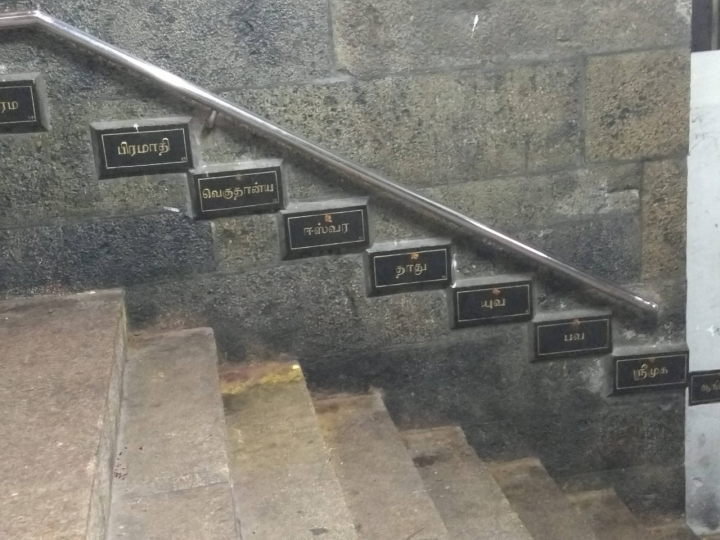
The Tamil Sangamam year names are written on the stairs of Swami Malai. From top to bottom in this photo are: Bramaadhi, Vegudhaanya, Ishwara, Naadhu, Yuva, Bhava and Shrimukha.
Swamimalai doesn’t have railway station. The nearest one is at Kumbakkonam, about 8 km to the east. The temple is on the highway from Thanjavur and Kumbakkonam. So buses connecting the two cities can be used. Certain trains from Chennai to Trichy use the route that passes through Kumbakkonam, although the faster ones use a different route called the chord line that doesn’t pass through Kumbakkonam or Thanjavur. Long distance buses are a better option than trains.
It is on this hill that you explained the significance of the OM chant to your own father. We Tamils worship it as the Swami Malai.
3 Pazhani
Pazhani is the most popular and most visited Arupadai Veedu. It is in the centrally located Dindigul district. There are two temples in Pazhani, one at the base of a hill and another at the top of the same hill. Pazhani is also the road-head for reaching Kodaikkanal hill station when driving from western Tamil Nadu, e.g. Coimbatore. So people combine a trip to Pazhani and Kodaikkanal.
At the hill base temple, Lord Murugan is worshipped as a child cow herder and is known by names such as Kuzhandhai Deivam (child deity) or Thiruvaavinan (the holy shepherd). The temple is thus called Thiruvaavinankudi (The place where the holy shepherd resides). The hill top temple hosts the temple of Dhandaayuthapani, a deity that holds a staff as a weapon. This deity is shown in a meditative state. The idol is made from an amalgam of 9 minerals that are local to this area. While there is a staircase that ascends from Thiruvaavinankudi to Dhandaayuthapani, the more popular way is to use the cable car that shuttles between the two.
Pazhani can be reached from multiple highways. To come from the west of Pazhani, one can use a bus on the highway Coimbatore – Pollachi – Udumalpet – Pazhani. From the east, Pazhani can be reached from Dindigul. Dindigul itself has two highways, one that goes to Madurai, thus leading to southern parts of Tamil Nadu, e.g. Tirunelveli, Kanyakumari, Rameswaram. The other highway from Dindigul goes to Trichy, from where one can use the GST (Grand State Trunk) highway to reach Chennai. Pazhani can be combined as a double-header to enjoy a mountain getaway to Kodaikkanal.
The white-haired sage awarded the mango that you so badly wanted to Ganesha, your elder brother, you withdrew as an ascetic with a garb at Pazhani, which is one of your homes.
4 Thirupparankundram
This hard to pronounce hill top temple is to the west of Madurai city and right beside the railway line from Madurai to Tirunelveli. The location of this temple is significant as the place where Lord Murugan married Devayani, the daughter of Lord Indra. Thirupparankundram is the oldest of the six Veedus and was built in the sixth century by Pandyas, who were long-time rulers of Madurai.
Madurai city buses ply via Thiruparankundram on their way to the city’s western suburbs. In addition, state buses bound for Theni district and inter-state (Tamil Nadu to Kerala) buses bound for Munnar and Idukki, pass through the bus depot at the temple base.
At the base of the hill, you can visit the temple pond and the town’s bazaar. Sharing the top of the hill with the Hindu temple is the Muslim dargah of Hazrat Sultan Sikandar Badshah of the Madurai Sultanate.
The place where you arrive as a groom with the beautiful, smiling and flower-like Devayani by your side is the colourful Thirupparankundram.
5 Pazhamudhir Cholai
Pazhamudhir Cholai is inside a hilly forest near Madurai city. The forest is believed to have had an abundance of fruit trees in a past era. Even today, the forest is reasonably dense with several trees with wild berries. As a result, you will see several monkeys who frequently ambush people for food!
Pazhamudhir Choiai is famous for an incident narrated by Tamil poet Avvayar, an old lady whose main works include songs in praise of Lord Murugan. In this incident, Lord Murugan is said to have disguised himself as a boy as he sat on the branch of a tree waiting for Avvayar’s daily visit to the forest. On seeing Avvayar tired from her trek to the forest, the boy offered to pluck fruits from the tree for her. Avvayar gracefully accepted. But then the boy asked her a puzzling question, “Do you want the fruits served hot or cold?”. Avvayar was confused and asked the boy how fruits could be served hot. The boy shook a branch vigorously and caused some fruits to fall to the ground. He invited Avvayar to pick them up. On seeing the fruits covered with dust from the ground, Avvayar started blowing on them with her mouth to clear the dust away. The boy commented whether the fruits were so hot that she had to blow on them to cool them down. Avvayar was found smarting for a moment, but then she realised who this boy really was. There in the depths of the forest, she sang some songs in praise of the mischievous Lord.
While the other Arupadai Veedu temples are grand, Pazhamudhir Cholai temple itself is way too simple to justify its status. Inside, you will see a statue of Lord Murugan flanked by his two wives, Valli and Devayani.
The fruit abundance of Pazhamudhir Cholai of the past is so legendary that you will see a famous chain of shops named ‘Pazhamudhir Cholai’ selling fruits with outlets all over Tamil Nadu.
Pazhamudhir Cholai can be reached from Madurai city. Buses run upto the base of the hill, where a famous temple dedicated to Lord Vishnu, Kallazhagar temple, stands. Beyond this, there is no public transport. People usually book a private transport from Madurai, such as mini buses, SUVs, etc. There is a toll to use the road ascending to Pazhamudhir Cholai. But we parked our car near Kallazhagar temple and trekked through a forest trail and then walked a bit on the paved uphill road to reach the temple.
Among the fruit trees, with Valli and Devayani by your side and where golden peacocks play all day, you are there for the distressed devotees at Pazhamudhir Cholai.
6 Thiruchendhur
This is the only temple that is not on the top of a hill. It is on a beach, seemingly defying Lord Murugan’s status as the Lord of mountains. But a glimpse down history shows that today’s temple is new. At the place where it stands today, there used to be a hill named the Sandhana Malai (Sandalwood hill), with a small Murugan temple. It is the place where the Lord defeated demon Surapadhman.
The beach around Thiruchendhur is quite long and can be enjoyed along with a visit to the temple. The view of sunrise from this beach is quite spectacular since the beach faces the east.
Thiruchendhur can be reached by state transport buses from Kanyakumari, Nagercoil, Thoothukkudi and Tirunelveli.
It is in this town, kissed by the waves of the ocean, that you took up the responsibility of the army of Devas and destroyed Surapadhman. This town, Chendhur, has enshrined you forever.
Other important Murugan temples in Tamil Nadu
There are other important Murugan temples around Tamil Nadu which are not part of Arupadai Veedu. These are:
1 Marudhamalai near Coimbatore. About 30 minutes from Coimbatore city centre.
2 Vadapazhani Murugan temple (Vada Pazhani : short form of Vadakku Pazhani, i.e. North Pazhani, since Chennai is to Pazhani’s north), Chennai. This temple is in the heart of Chennai city.
3 Kundrathur Murugan temple, Chennai. This temple is on the outskirts of urban Chennai, but is within the city corporation.
4 Kandhasamy temple, Thiruporur, Chengalpattu district. Again, Chennai is the nearest major city, less than 100 km away.
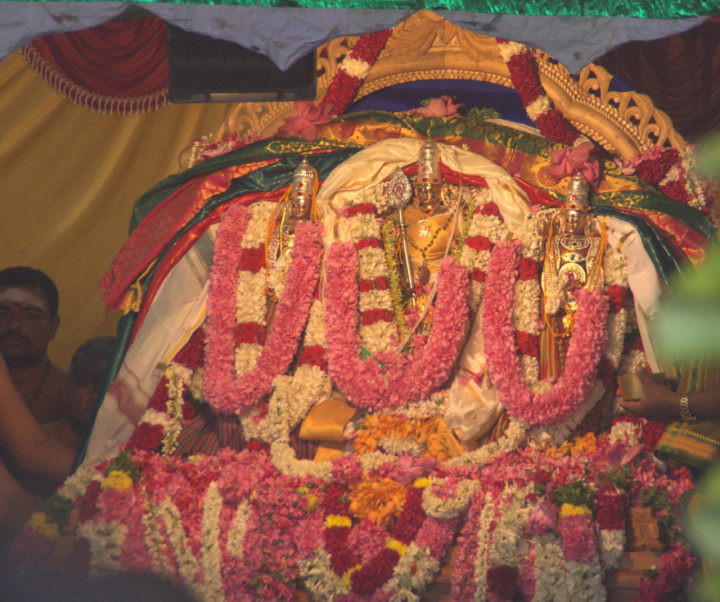
Marriage of Lord Murugan to Valli and Devayani enacted at Coimbatore district’s Marudhamalai temple.
Conclusion
The concept of Arupadai Veedu is very important to Tamil Nadu and is a core part of their culture and literature. Visiting temples is a great way to learn plenty about Tamil Nadu. The stories about Lord Murugan are best learnt with a thematic tour covering all the six major temples dedicated to Him.
Note: The quotations at the end of the description of each temple are the English translations from the lyrics of the song ‘Arupadai Veedu Konda Thirumuruga’ (The Lord Muruga who found six abodes) from the 1967 Tamil movie ‘Kandhan Karunai’ (The compassion of Lord Kandhan). The song itself was inspired by Nakkeerar’s Thirumurugaatrupadai.

